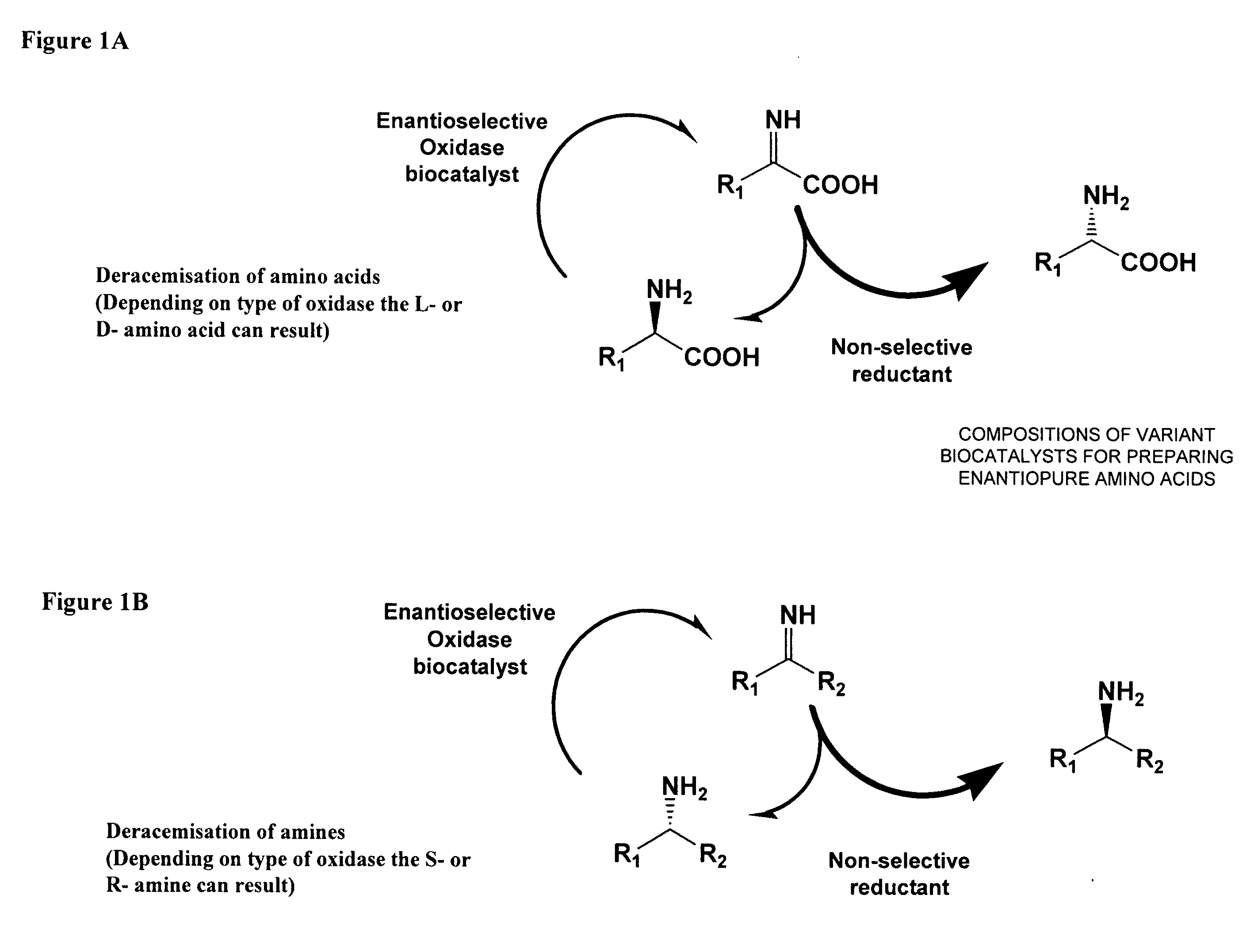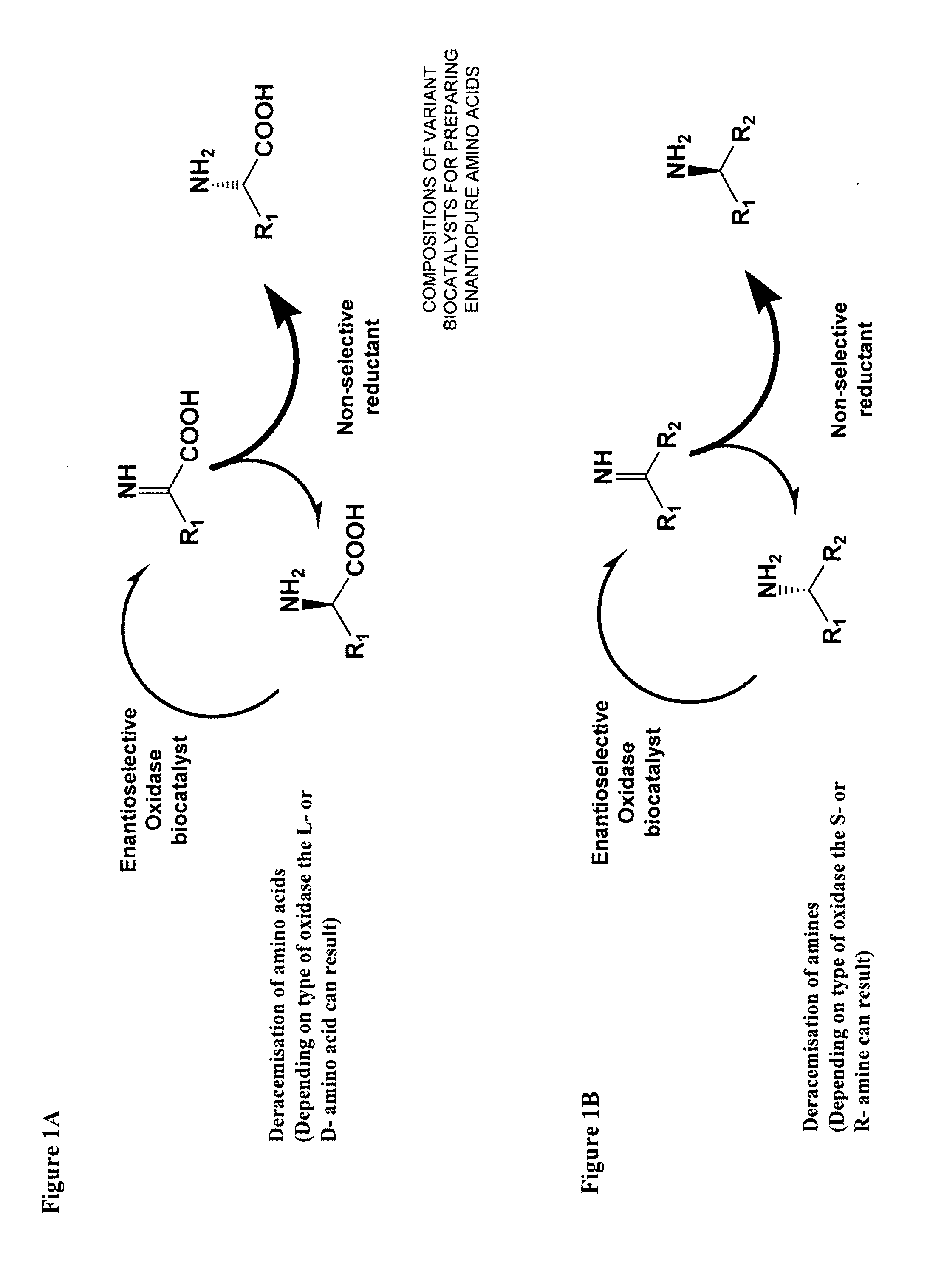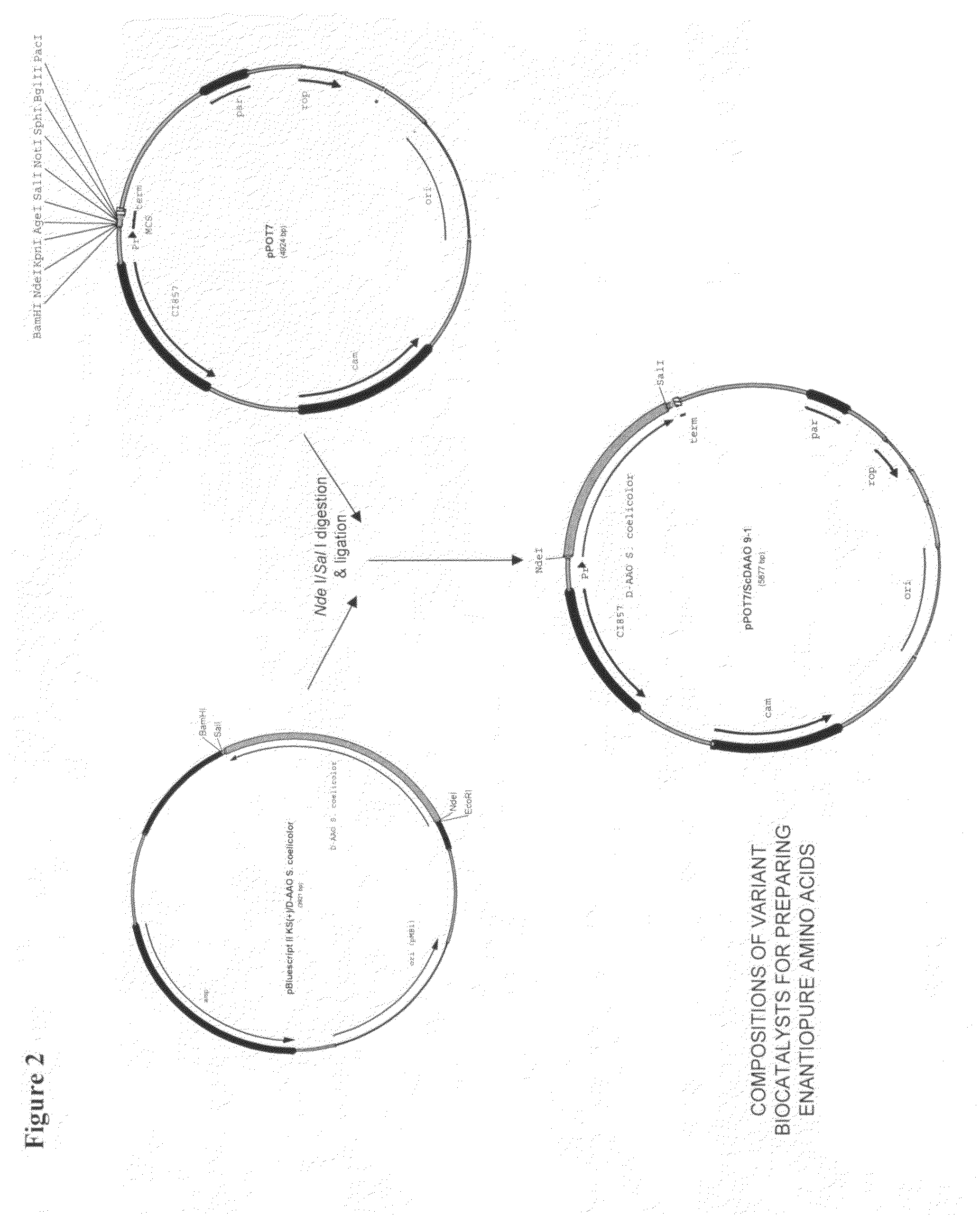Compositions of variant biocatalysts for preparing enantiopure amino acids
a biocatalyst and amino acid technology, applied in the field of enantioselective production of amino acids using variant biocatalysts, can solve the problems of low efficiency and relatively low yield, many inherently compromised, limited fermentation methods, etc., and achieve the effect of increasing biocatalytic activity and increasing biocatalytic activity
- Summary
- Abstract
- Description
- Claims
- Application Information
AI Technical Summary
Benefits of technology
Problems solved by technology
Method used
Image
Examples
example 1
Cloning of the D-amino acid oxidase from S. coelicolor and isolation of variants with increased biocatalytic activity on D-amino acid substrates by random mutation and screening
The D-amino acid oxidase gene from S. coelicolor is synthetically synthesized using standard gene synthesis techniques using the available protein sequence, Swiss-Prot Acc. # Q9X7P6. The DNA sequence, optimized for E. coli codon usage, was synthesized as identified in SEQ ID No. 1 and cloned into plasmid vector pBluescript II KS (+) using unique Eco RI and Bam HI restriction sites by Celtek Genes of Nashville, Tenn. The D-amino oxidase fragment was subsequently subcloned, using Nde I and Sal I restriction sites, into the temperature sensitive expression vector pPOT7 so that the gene is under control of the temperature inducible Lambda PR promoter using standard molecular biology techniques to form the Plasmid construct pPOT7 / ScDAAO, as shown in FIG. 2. E. coli strain RCI100 is transformed by this plasmid usin...
example 2
Isolation of D-Amino Acid Oxidase Variants of S. coelicolor with Increased Biocatalytic Activity Towards D-Amino Acid Substrates by Combining Beneficial Random Mutations
The His141Tyr and Thr218Ile mutations described in Example 1 are combined using the QuikChange procedure by Stratagene™, USA. The His141Tyr mutation is added to the Plasmid pPOT7 / ScDAAO C2 variant (Thr218Ile) with a QuikChange II XL kit using the manufacturers recommended conditions, and using mutagenic primers SEQ ID No. 10 and SEQ ID No. 11. Several isolates are sequenced to confirm the correct DNA sequence, as identified in SEQ ID No. 12, and a confirmed clone, Plasmid pPOT7 / ScDAAO 9-1, is analyzed for activity against several D-amino acids as described in Table 2. The results show that the two mutations were additive with regards to oxidase activity yielding a 93-fold increase in specific activity on D-tert-leucine as compared to the native S. coelicolor oxidase. Additionally, the specific activity on several oth...
example 3
Isolation of D-Amino Acid Oxidase Variants with Increased Specific Activity to D-Amino Acid Substrates and Increased Thermal Stability by Random Mutagenesis of S. coelicolor Variant HIS141Tyr, Thr218IlE (pPOT9 / ScDAAO 9-1)
Plasmid pPOT9 / ScDAAO 9-1 is subject to mutagenesis using the GeneMorph II Random Mutagenesis kit. The mutagenesis, screening, DNA sequencing and specific activity determination were performed as described in Example 2 with one exception. To decrease the background of active colonies, the library colony lifts were heated at 55° C. for 90 minutes prior to activity screening. These conditions completely inactivate the oxidase activity in induced colonies of RCI100 carrying Plasmid pPOT9 / ScDAAO 9-1. Thus, any variants having biocatalytic activity after heat treatment should be more active and / or more heat stable and yield a more robust oxidase. As shown in Table 3, a number of improved variants exhibiting higher specific biocatalytic activity on D-tert-leucine were obta...
PUM
| Property | Measurement | Unit |
|---|---|---|
| Stability | aaaaa | aaaaa |
| Purity | aaaaa | aaaaa |
Abstract
Description
Claims
Application Information
 Login to View More
Login to View More - R&D
- Intellectual Property
- Life Sciences
- Materials
- Tech Scout
- Unparalleled Data Quality
- Higher Quality Content
- 60% Fewer Hallucinations
Browse by: Latest US Patents, China's latest patents, Technical Efficacy Thesaurus, Application Domain, Technology Topic, Popular Technical Reports.
© 2025 PatSnap. All rights reserved.Legal|Privacy policy|Modern Slavery Act Transparency Statement|Sitemap|About US| Contact US: help@patsnap.com



